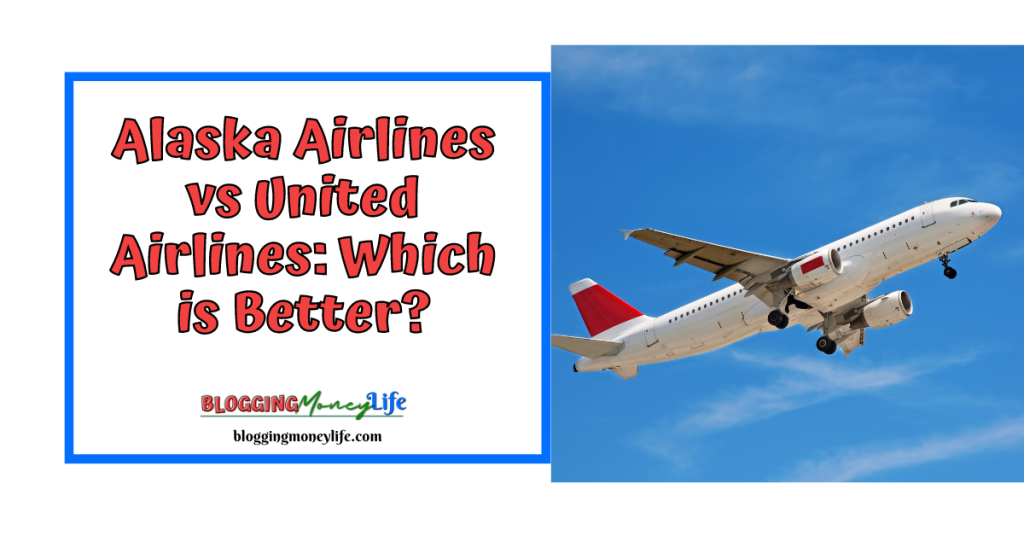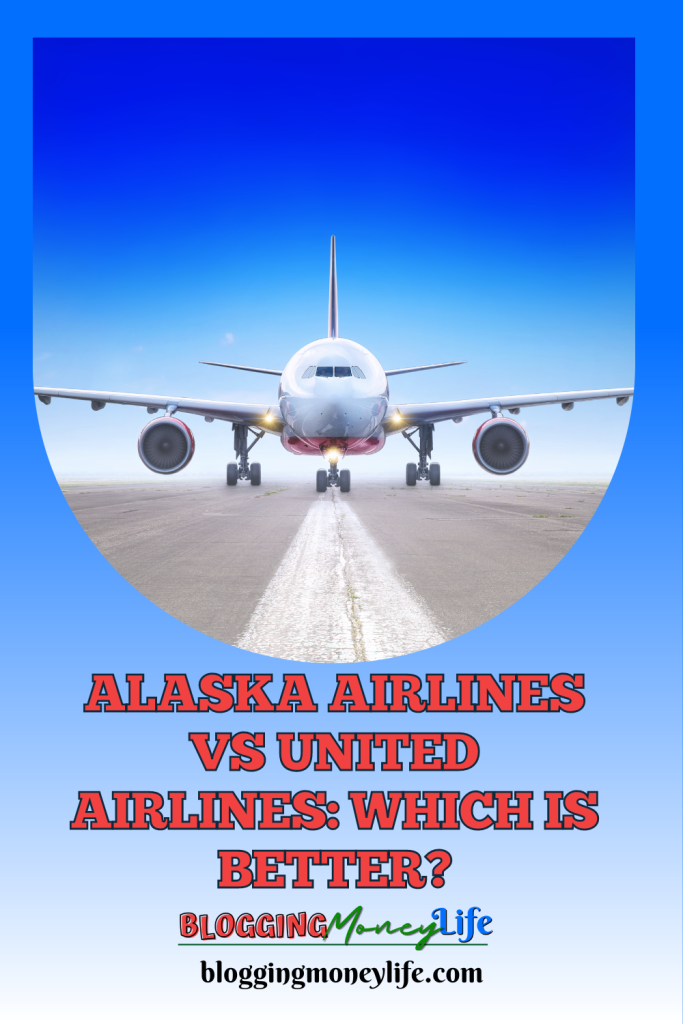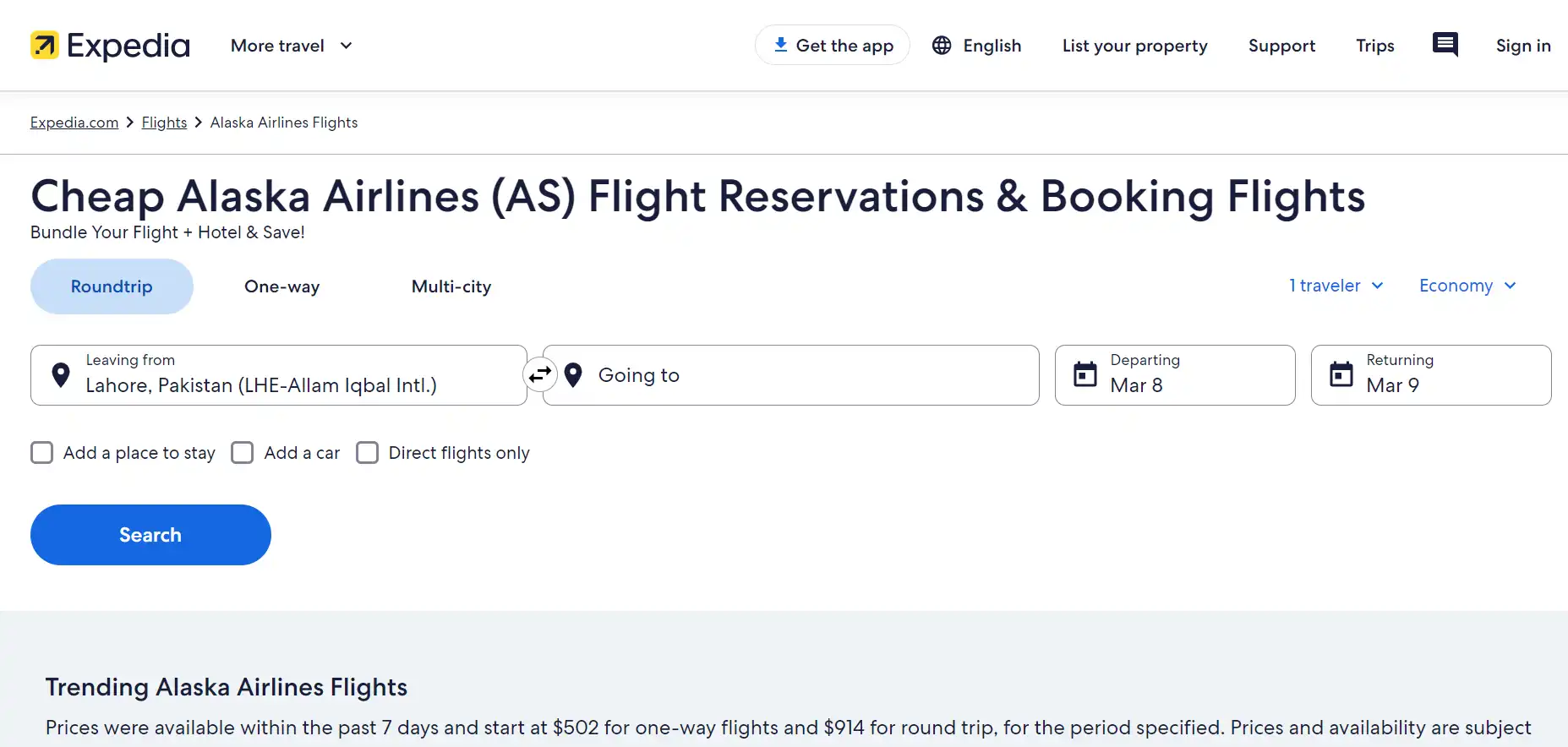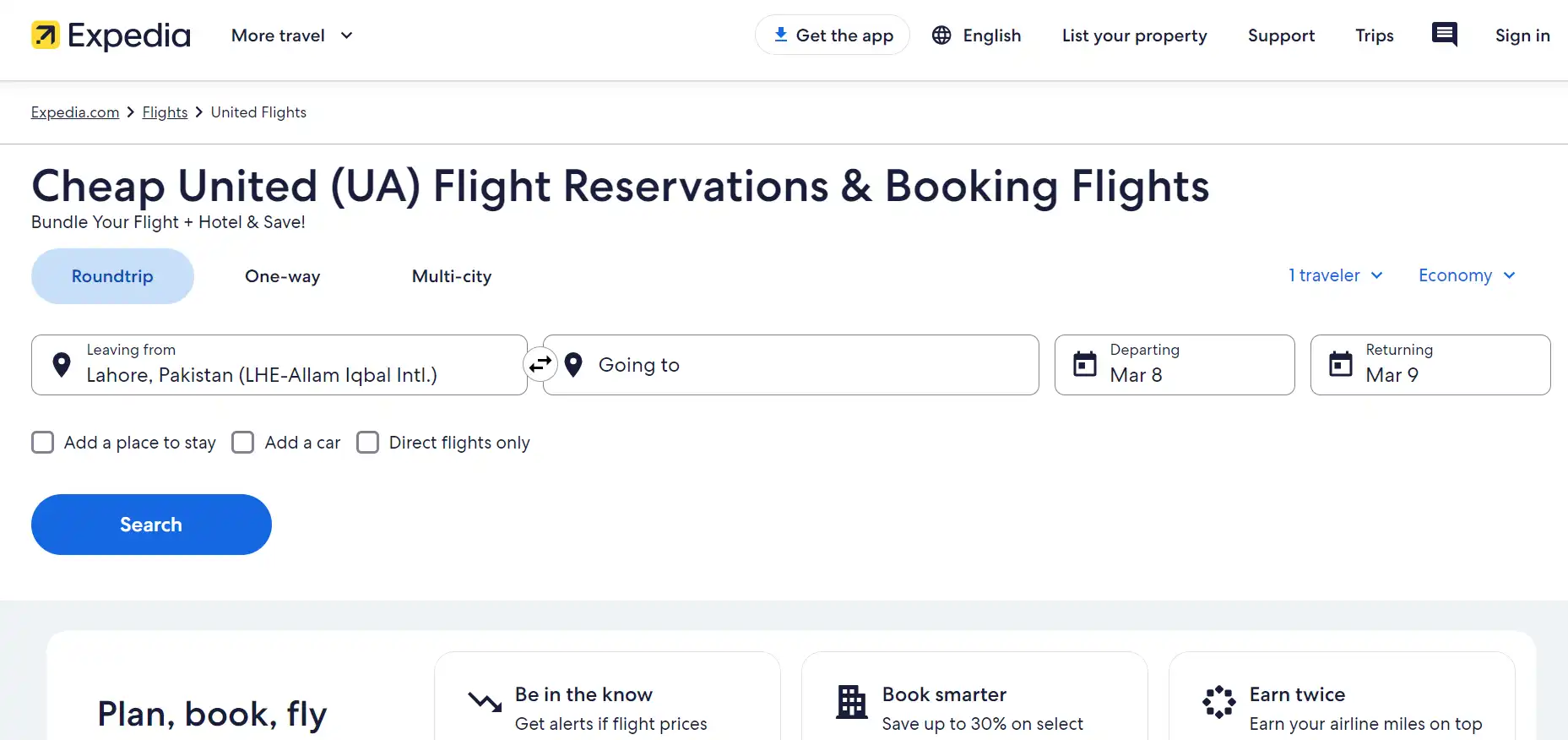Alaska Airlines vs United Airlines: Which is Better?

When comparing Alaska Airlines and United Airlines, travelers face a crucial decision influenced by various factors. Alaska Airlines excels as a great customer service provider and family-friendly feature, particularly on journeys to Alaska and the West Coast. At the same time, United Airlines boasts extensive global reach despite higher customer complaints.
Alaska Airlines is a preferred choice for travelers looking for Alaska flights as it dominates the West Coast hubs, while United Airlines offers a broader route network.
In-flight experiences differ, with Alaska Airlines offering complimentary beer and wine and United Airlines offering diverse entertainment. These distinctions underscore the importance of selecting the right airline for a better choice and seamless travel experience between these two famous American airlines.
Company Background
A. Alaska Airlines
Founded as McGee Airways in 1932, Alaska Airlines became a significant player in US aviation after rebranding in 1944. Headquartered in Seattle, it operates over 100 destinations across the US, focusing on the West Coast and Alaska.
Operating a Boeing 737 series aircraft fleet, Alaska Airlines serves popular routes like Seattle to Los Angeles and Anchorage to Honolulu. It also flies international flights to Hawaii and Mexico, with regional flights operated by Horizon Air and SkyWest Airlines. Even more, Alaska Airlines received the Air Travel Transport World’s Airline of the Year award in 2022, recognizing its innovation and service excellence despite pandemic challenges.
B. United Airlines
Originating as Varney Air Lines in 1926, United Airlines grew into a new look through acquisitions to become the third-largest airline worldwide. Following a merger with Continental Airlines in 2010, it expanded its fleet to 948 mainline aircraft in recent years. United operates eight hubs, including Chicago-O’Hare and Denver, facilitating extensive domestic and global connectivity.
United serves 238 domestic and 118 international destinations across six continents. Its hub-and-spoke model ensures efficient travel, with dominant market shares at critical airports like Denver and Houston-Intercontinental. United was also recognized as the Best Overall Airline in the World by Global Traveler readers in 2020; United Airlines upholds its commitment to exceptional service and travel experiences with its list of partners.
Fleet and Aircraft
A. Alaska Airlines
Alaska Airlines operates Boeing 737 series aircraft and Embraer 175 jets. Their cargo fleet includes Boeing 737 freighter jets. Notable liveries celebrate their partnership with Boeing on all of their Alaska Airlines flight and aircraft.
In addition, with a focus on passenger comfort and fuel efficiency, Alaska Airlines maintains a young fleet. They operate 231 Boeing 737 aircraft, averaging 9.7 years, and 83 Embraer 175 aircraft, averaging 5 years. They are also part of the oneworld® global alliance, offering flexible travel policy, new routes to major cities, favorite flight features, and extensive travel options. Their aircraft liveries showcase the airline’s heritage and community engagement with indigenous Alaskan motifs.
B. United Airlines
United Airlines operates 948 mainline aircraft, consisting of Airbus and Boeing narrowbody and Boeing widebody planes. Despite having the oldest fleet among major US airlines, United is modernizing with over 170 new aircraft added as of February 2024, a figure slightly higher than the previous year. These efforts include Braille labels, seatback screens, in-seat power, and wireless Bluetooth connections.
More so, United Airlines also offers a flexible travel policy with premium transcontinental services, giving passengers a choice between United Premium PlusSM with hot meals and free drinks or United Business featuring flat-bed seats, Saks Fifth Avenue bedding, and enhanced dining options, showcasing United’s commitment to passenger comfort and modernization.
In-Flight Services
A. Alaska Airlines
Alaska Airlines offers different classes (Main Cabin and Premium Class seating), with Premium Class providing additional services such as extra legroom and access to Alaska Beyond Entertainment. First Class ensures spacious seating with in-flight amenities and entertainment, adjustable headrests, and specialized service compared to economy class. While lacking seatback screens, Wi-Fi and entertainment tablets are available for purchase.
USB ports are accessible, although some may not function. Also, families may benefit from extensive in-flight entertainment options.
The airline provides three meals and two snacks on long-haul flights, including pre-orders and kid-friendly choices. Complimentary snacks and drinks are offered to all passengers, with additional buy-on-board selections available. Overall, Alaska Airlines provides diverse in-flight services catering to families’ needs.
B. United Airlines
United Airlines offers First, Business, Economy Plus, and Economy classes, providing perks like extra legroom in Economy Plus. Compared to Alaska Airlines, their amenities vary, with similar offerings in premium classes but fewer meal options.
While complimentary beverages are provided, outdated technology and intermittent Wi-Fi have been reported on social media.
Baggage handling policies may be costlier for families, with fees starting at $25 for the first bag and $35 for the second. However, children under two receive a free checked bag on Alaska Airlines, making it more economical for families. Consider the airline’s offerings, additional costs, and baggage policies based on your family’s needs.
Customer Satisfaction and Reviews

A. Alaska Airlines
Alaska Airlines stands out for its attentive staff and excellent customer service, often receiving praise from passengers. While occasional incidents with disgruntled employees may occur, the airline maintains a strong reputation for its cabin crew and customer service representatives.
With a slightly better on-time performance record than United Airlines, Alaska is recognized for its responsiveness in resolving customer complaints.
Offering multiple communication channels, including phone, email, and social media, Alaska ensures assistance is available 24/7 through its dedicated customer care team. For travelers valuing top-notch service, Alaska Airlines is preferred for its excellence and responsiveness.
B. United Airlines
United Airlines garners mixed reviews on customer service, especially post-merger with Continental. While some passengers commend exceptional staff efforts, others express dissatisfaction, noting empathy may not be a top priority for such a large airline.
Despite strides in assisting families with young children, United faces criticism for its rigid policies and lack of flexibility, particularly concerning change fees and cancellations.
According to the US Department of Transportation (Federal Aviation Administration), United registers more customer complaints than Alaska Airlines, indicating areas for improvement. Reviews on independent travel platforms highlight instances of lost luggage and inadequate resolution, impacting overall satisfaction.
Loyalty Programs
Both United Airlines’ MileagePlus program and Alaska Airlines Mileage Plan offer distinct advantages.
United’s program provides generous flying rewards and a wide range of airline partners, though its lack of an award chart may complicate mileage redemption. In contrast, Alaska’s plan offers an annual companion fare, free flights for kids on select routes, and a straightforward award chart.
Choosing between them depends on your travel habits; United suits frequent flyers seeking diverse rewards, while Alaska caters to families prioritizing simplicity and companion benefits.
Pricing and Fare Options
Both Alaska Airlines and United Airlines offer diverse pricing structures and fare options.
Alaska’s booking system is straightforward, with fare options including Saver, Main Cabin, and First Class, offering different amenities and flexibility. On average, flights across the US with Alaska range from $275 to $1069.
United’s booking process is similarly comprehensive, with fare categories like Basic Economy, Economy, and Premium Plus providing varying services and perks. Their average round-trip fares range from $261 to $615. Alaska has lower fares and offers more free amenities like Wi-Fi and snacks, making it budget-friendly, while United offers a broader range of destinations and flight options.
On-Time Performance and Punctuality
Alaska Airlines maintains a commendable record of operational efficiency, with 82.3% of flights arriving on time, ranking second in North America.
Their cancellation rate of 1.52% places them favorably in reliability metrics. However, their luggage mishandling rate of 0.70% slightly trails behind industry leaders. On the other hand, United Airlines reports a punctuality rate of 78.89% and a cancellation rate of 1.73%, showcasing a respectable performance but slightly lower than Alaska’s.
Alaska Airlines had past incidents, notably in 2000, necessitating safety improvements. United faced incidents like Flight 93 and 175 on September 11, 2001, and recent engine failures, leading to safety concerns and criticism of Boeing’s manufacturing practices. Despite challenges, both airlines maintain operational resilience.
Sustainability and Corporate Responsibility
A. Alaska Airlines
Alaska Airlines has demonstrated a solid commitment to environmental sustainability through its EverGreen journey. They aim to become the most fuel-efficient US airline by 2025 and achieve net-zero carbon emissions by 2040. Alaska Airlines focuses on reducing waste and supporting healthy ecosystems in the areas they serve.
Additionally, they invest in people and communities, championing diversity, equity, and inclusion and building strong community connections. Alaska Airlines has been transparent about its sustainability efforts, sharing progress, learnings, and stories in its annual CARE report.
CEO Ben Minicucci has emphasized the importance of innovation and technological advancements in achieving sustainability goals, such as investing in sustainable aviation fuels. They also prioritize employee retention and customer experience enhancements, like electronic bag tags, to improve operational efficiency and customer satisfaction.
B. United Airlines
United Airlines is also dedicated to environmental sustainability, being the first airline globally to publicly announce a climate goal without relying on traditional carbon offsets. They aim to reduce 100% of their greenhouse gas emissions by 2050 and have set a mid-term target to reduce carbon intensity by 50% by 2035 compared to 2019.
United’s strategy involves reducing its environmental footprint, innovating in carbon reduction technology, removing carbon, and collaborating with stakeholders. They have established the Sustainable Flight Fund, a significant investment vehicle explicitly focused on sustainable aviation fuel technologies.
United actively collaborates with various stakeholders to drive environmental progress and has garnered support from partners like American Express Global Business Travel, Aramco Ventures, and Aviation Capital Group. They also engage consumers by showing estimates of flight carbon footprints when booking and offering the option to contribute to the Sustainable Flight Fund.
United’s commitment to net zero emissions, investment in sustainable aviation fuel, and collaborative approach position them as leaders in environmental responsibility within the airline industry.
Conclusion
In conclusion, the comparison between Alaska Airlines and United Airlines reveals distinct strengths and areas of focus for each carrier. Alaska Airlines stands out for its exceptional customer service, commitment to environmental sustainability through initiatives like the EverGreen journey, and transparent progress reporting in its annual CARE report.
CEO Ben Minicucci’s emphasis on innovation and technological advancements underscores the airline’s proactive approach to sustainability and customer experience enhancements. On the other hand, United Airlines showcases a global reach with an extensive route network and a pioneering commitment to environmental responsibility, evidenced by being the first airline to publicly announce a climate goal without relying on traditional carbon offsets. Their Sustainable Flight Fund initiative and collaboration with various stakeholders demonstrate a strategic focus on reducing environmental impact.
Based on the outlined factors, personal recommendation may vary depending on individual preferences and priorities. Alaska Airlines is an excellent choice for travelers who value exceptional customer service and transparency in sustainability efforts. Alternatively, United Airlines offers a compelling option for those prioritizing global connectivity and a solid commitment to environmental responsibility.
Ultimately, travelers should consider their specific needs, such as destination preferences, loyalty program benefits, pricing, and in-flight amenities, to make an informed decision between Alaska Airlines and United Airlines for a seamless and satisfying travel experience.



